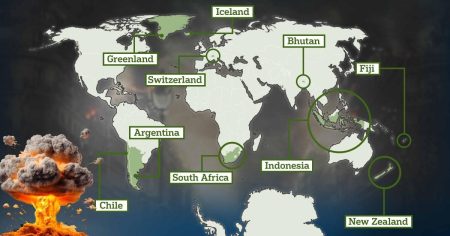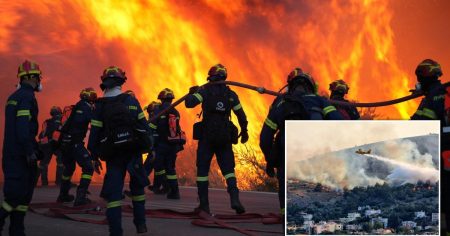Paragraph 1: The Devastating Impact of Cyclone Chido on Mayotte
Cyclone Chido, a ferocious storm that ravaged the French Indian Ocean territory of Mayotte in May, left a trail of destruction and a potentially staggering death toll. Initial estimates from Mayotte Prefect Francois-Xavier Bieuville suggested that the number of fatalities could reach into the thousands, a grim testament to the cyclone’s intensity. The island, located in the southeastern Indian Ocean, bore the brunt of the storm’s fury, with widespread damage reported across its infrastructure and communities. The cyclone also impacted the neighboring islands of Comoros and Madagascar, though the extent of the damage in those areas was initially less clear.
Paragraph 2: Challenges in Assessing the Damage and Death Toll
The immediate aftermath of Cyclone Chido presented significant challenges for authorities attempting to assess the full scope of the disaster. Communication lines were severely disrupted, making it extremely difficult to gather accurate information about the extent of the damage and the number of casualties. Early reports indicated at least 11 confirmed fatalities and nine individuals critically injured. A hospital in Mayotte reported treating 246 injured people, but with communication limited and access to affected areas hampered, the fear remained that the death toll would climb significantly as more information became available.
Paragraph 3: The Scale of Destruction and the Government Response
The sheer force of Cyclone Chido left an indelible mark on Mayotte’s landscape. Winds exceeding 136 mph, as reported by the French weather service, tore metal roofs from houses, flattened entire neighborhoods, and uprooted trees. Small structures were decimated, and numerous boats were capsized or sunk. The main hospital and the airport, critical infrastructure components, sustained severe damage. The French government responded swiftly, deploying 1,600 police and gendarmerie officers to assist the population and prevent potential looting in the chaotic aftermath. Newly appointed Prime Minister Francois Bayrou acknowledged the extensive damage to public infrastructure and pledged support for the recovery efforts.
Paragraph 4: The Historical Context of Cyclone Chido’s Impact
Cyclone Chido’s unprecedented intensity marked it as the worst cyclone to hit Mayotte in 90 years, according to the island’s prefect. This historical context underscores the severity of the event and the immense challenge facing the island’s population in rebuilding their lives and communities. The long period between such devastating cyclones likely contributed to a lack of preparedness for an event of this magnitude, compounding the difficulties in responding effectively to the widespread damage and loss of life.
Paragraph 5: The Human Cost and the Long Road to Recovery
Beyond the physical devastation, Cyclone Chido inflicted a profound human cost. The loss of life, homes, and livelihoods left many residents traumatized and facing an uncertain future. The scale of the destruction meant that the recovery process would be long and arduous, requiring substantial resources and sustained effort. The challenges of rebuilding infrastructure, providing essential services, and addressing the psychological impact of the disaster loomed large. The international community would likely play a crucial role in supporting Mayotte’s recovery efforts.
Paragraph 6: The Need for Long-Term Resilience and Preparedness
Cyclone Chido serves as a stark reminder of the vulnerability of island nations to extreme weather events, particularly in the context of a changing climate. The devastating impact of this cyclone underscores the need for enhanced disaster preparedness measures, including early warning systems, robust infrastructure, and community-based resilience strategies. Investing in these areas is essential to mitigating the impact of future cyclones and ensuring the long-term safety and well-being of communities like those in Mayotte. The international community should collaborate to support vulnerable regions in developing and implementing effective disaster preparedness and response strategies.











